Water and life, where and on Mars! Summary chronicle of the search started long ago
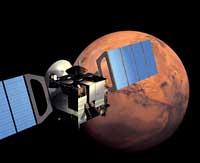
The first citations on the water of Mars date back to 1870. Astronomer Giovanni Schiapparelli claimed to have seen the canals of Mars with the telescope. This provoked the imagination of several astronomy fans, who considered them as artificial channels created by the being.
To say that on Mars there were living beings based on structures in the form of aqueduct seemed a little more to prudent and sensible astronomers, but they showed that there were channels in the observations of the coming years. However, the idea of intelligent beings doing water management channels did not disappear at all, and in 1895 astronomer Percival Lowell again stimulated the conviction that he had also seen a complex network of channels that, according to all appearances, were artificial.
This debate on the origin of the channels lasted decades. However, the spacecraft that approached Mars in the years 1960-1970 totally disregarded the subject of artificial channels. Mars was not flooded, there was no network of channels for the transfer of water from one side to the other. On the contrary, the Martian soil resembled the deserts of planet Earth.
Mars=desert? No, thank you

However, astronomers did not stop. Between the 1970s and 1990s, spacecraft that have passed near Mars received images of the surface of Mars. And there were the channels seen by telescope! In addition to river-like structures, there were other unique structures. As soon as we begin to imagine how these structures would be created, we thought of the water hypothesis. It was so tempting... and it also adjusted so well to the geological structures seen on the surface of Mars...
They had to recognize, however, that they had not noticed a drop of water. The density of the Martian atmosphere is about 1% of the Earth's, so it is somehow too thin to keep water molecules on the surface. However, surface structures denounced the abundance of water at some point. How did they arise if not? Everything indicates that at some point there were large floods, lakes and in the northern hemisphere perhaps also an ocean. The strenuous astronomers found remains of all of them in the images collected by spacecraft.
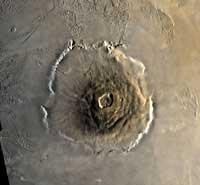
All the clues, however, were indirect, they had no proof to verify the proposals. Therefore, scientists had a place for doubt and had to analyze other alternatives. For example, it was possible that the canals were spilled with frozen carbon dioxide, a light lava or ice currents... Who knows! These options were also based on structures and, as with the water hypothesis, they had no conclusive evidence.
Thorough review and detection of wells and sludge
Research on Mars advanced and in 2002 the Mars Global Surveyor spacecraft took the most demanding look to Mars. As he saw, the water seemed to leak through the canyons and craters and formed the ravines. Not 4 million years ago, but in the recent past or even at the same time. There seemed to be water wells on the surface of the planet and, perhaps, at some point there were adequate conditions for the creation and survival of living beings. But there were too many conditional and optional phrases on the scientists' lips. Skeptics could have many reasons to believe there was no water, neither now nor before.

In March 2004 NASA's Opportunity vehicle received direct indications for the first time. Apparently, he found evidence that the rocks in the area were in contact with liquid water at the vehicle's landing site, the Meridiani Planum. But what were those supposedly undeniable evidence?
The tests were of three types: chemical, morphological and mineralogical. The holes in the rocks showed that there were salt crystals there and that they dissolved; the perfect spheres of the mineral hematite seemed to be produced in the water; and they identified in the rock a mineral that only occurs in the water, jarosita.
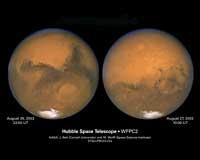
In any case, for its formation a little water is enough, that is, from there it could not be deduced that there were seas or rivers. On the rocks of Mars, however, they realized that the aspect adopted by the layer of sand on the rocks was not negligible. It had nothing to do with the dunes produced by the wind on Earth. On the contrary, it looked very much like the structures that produce waves or currents. Conclusion: That place where Opportunity was at some point covered with water, perhaps in a shallow sea. That according to NASA.
No liquid water. De memento

In recent months, Opportunity has toured the Endurance crater, where it has collected numerous indications of the presence of water. They say there is no other explanation for how the structures and materials you have found have been created. In addition, it seems that this area was submerged for a long time, since the sediment layers of the crater have been formed by the action of water and the passage of time.
However, they have not found liquid water. Does it exist? The most optimistic hope to receive a response this year. In fact, the MARSIS radar of the European spacecraft Mars Express should end this year the map of Mars. This radar reaches a kilometer depth. Therefore, we will soon know if in the water table there is a lot of water, or if there are small bags of water or not... However, this will not clarify the existence of living beings. The fatest question, therefore, will remain the same, anyone knows how long.
Upcoming missions
Did you ever live on Mars? Are there beings on the red planet today? The following missions can help answer this question.

MARSIS
Radar with tracking capability under the skin. ESA goes inside the European Space Agency's Mars Express spacecraft, and explains if there is water under the surface.Even though Mars Express has been orbiting around Mars for a year, MARSIS has not yet come into operation. Apparently, in computer simulations they have seen that the long mast of the radar, moving along the way, can damage other devices. Calculations have been made and will be launched in March. Wait until that moment to receive the first data!
MARS RECONNAISSANCE ORBITER
In August this year NASA wants to ship the largest spacecraft ever orbited by Mars. It will reach Mars in 2006 and will spend two years spinning around it. During this time it will focus on 1% of Mars and make a precise map of this stretch, with a resolution of 30 cm, nothing further! It will also analyze the mineralogy of Mars, weather and weather, and discover if there is water below the surface. It will also analyze where the following missions should land.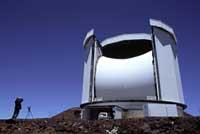
PHOENIX
NASA aims to establish a kind of laboratory on Mars, a mission that will begin in 2007 with the aim of conducting detailed studies on the surface of Mars. To do this you will install a lot of tools and devices there. Among other things, a drilling tool half a meter deep and identifying samples.Although Phoenix's task is not the search for life, if complex organic molecules are found it will identify them. In addition, it has an optical microscope and an atomic that allows it to analyze remains or fossils of living beings. If there are, of course.
MARS SCIENCE LABORATORY
This project also belongs to NASA and is preparing for 2009. Just as you now have the Opportunity and Spirit vehicles, then you also want to bring two other vehicles to Mars, but the mission will be longer and deeper. The place of traffic of the vehicles will be selected in advance so that the data they collect is as significant as possible. Among the tools they will take will have an advanced spectrometer that will allow them to know how methane is produced...
EXO-MARS
It is an ESA project with which they want to analyze Mars both from the sky and from within. To do this, a spacecraft will orbit around Mars and a vehicle will circulate on the surface. Exo-Mars is specially prepared for the search for life. It will also seek an ideal place to establish a sustainable foundation in the future.The vehicle will carry 40 kg of tools, including a machine capable of drilling up to a depth of two meters and a laboratory. You will also receive images and surface and underground samples. If the samples are found to be organic compounds, it will compare them to the molecules that relate to life on Earth. For example, if you find amino acids, you will check whether L or R. In fact, L-amino acids are a clear indication of life on Earth.
Where does methane come from?
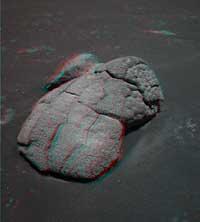
On Earth, almost all the methane in the atmosphere is produced by living beings, from decaying plants to puzkers of cows. Therefore, when three unrelated groups claimed to have detected methane in the atmosphere of Mars last year, some immediately asked: Is it possible that the origin of this methane is living beings? Can detected methane be a test of the activity of microorganisms? And they kept dreaming...
It seems that NASA wants to believe that sleep is true. It joins methane and water, indicating that methane has appeared in the same place where there is water vapor. Consequently, these places can be habitats of life. Again, too many optional and conditional phrases to explain the origin of methane exist other options: volcanoes, comets... It is still early to know anything. Meanwhile, dreaming is free.
Next stop, Mars Mars, Old and New Red Planet All to Mars
Published in D2 section of Deia.
Buletina
Bidali zure helbide elektronikoa eta jaso asteroko buletina zure sarrera-ontzian











